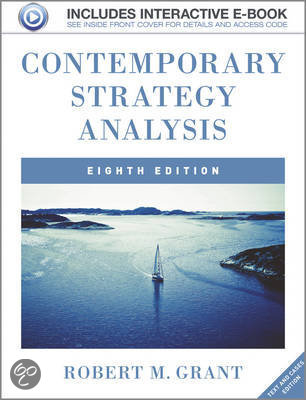Samenvatting
Summary contemporary strategy analysis, Grant, chapter 1-10
- Instelling
- Universiteit Van Amsterdam (UvA)
A summary of the first ten chapters of the book "Contemporary Strategy Analysis" by Robert Grant. Very elaborate summary. If study this summary, you will not need to read the book anymore!
[Meer zien]






